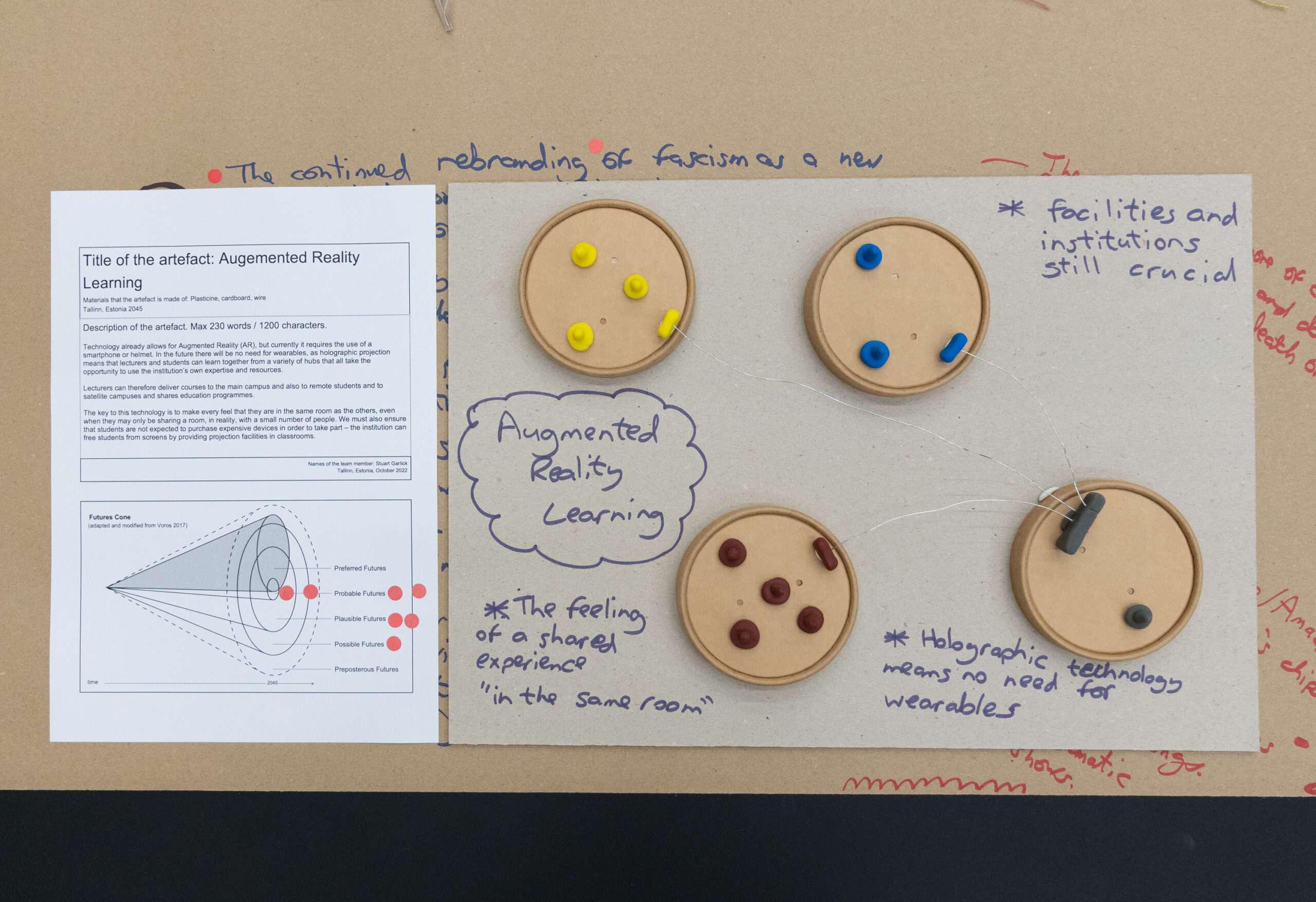
Technology already allows for Augmented Reality (AR), but currently it requires the use of a smartphone or helmet. In the future there will be no need for wearables, as holographic projection means that lecturers and students can learn together from a variety of hubs that all take the opportunity to use the institution’s own expertise and resources.
Lecturers can therefore deliver courses to the main campus and also to remote students and to satellite campuses and shared education programmes.
The key to this technology is to make everyone feel that they are in the same room as the others, even when they may only be sharing a room, in reality, with a small number of people.
We must also ensure that students are not expected to purchase expensive devices in order to take part – the institution can free students from screens by providing projection facilities in classrooms.




The Cone helps categorise future scenarios into four distinct buckets:
And lastly, preferred futures, the Holy Grail of speculative design. Preferred is where you place the scenarios you want to happen.
This is where most design practitioners operate. It describes what is likely to happen unless there is an extreme disturbance or turmoil.
Plausible refers to what could happen. It’s where scenario planning and speculation live.
At the edge of the cone is what might happen, even if it’s difficult to imagine.
Discussion
No feedback has been added yet
Share a Thought